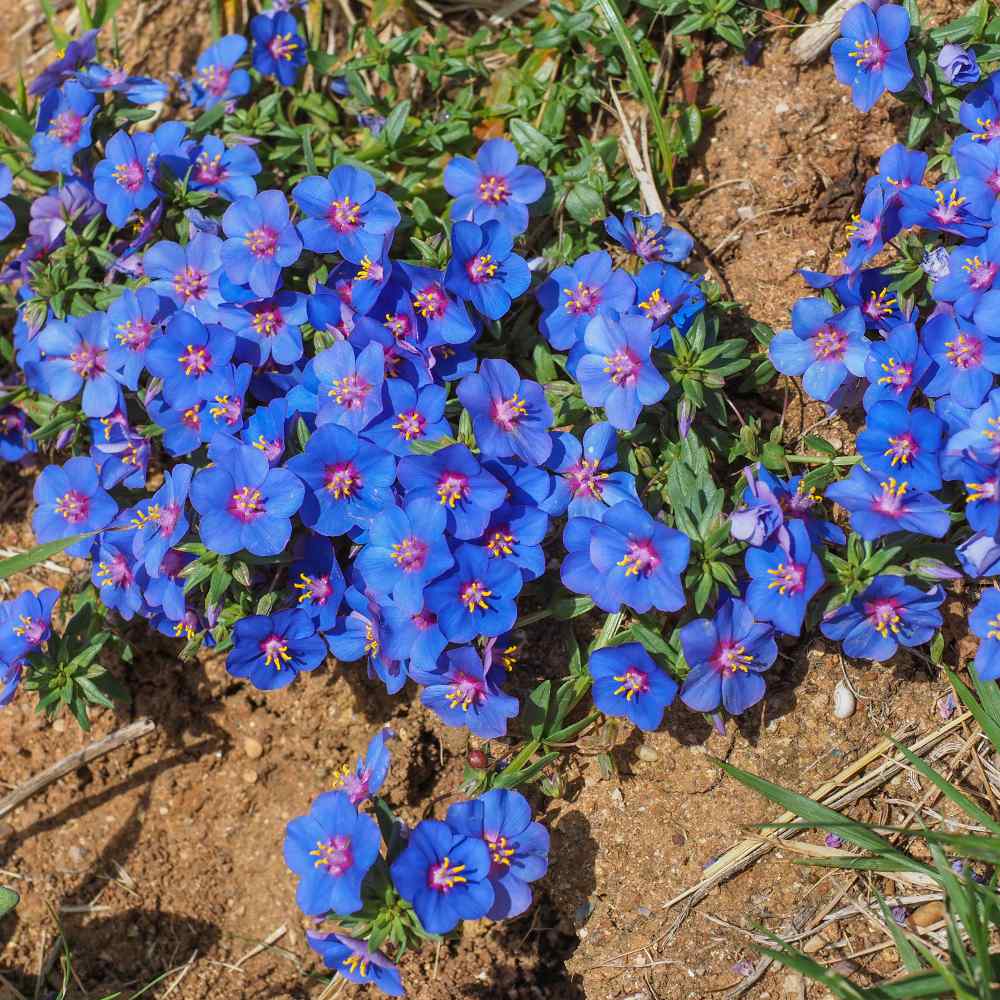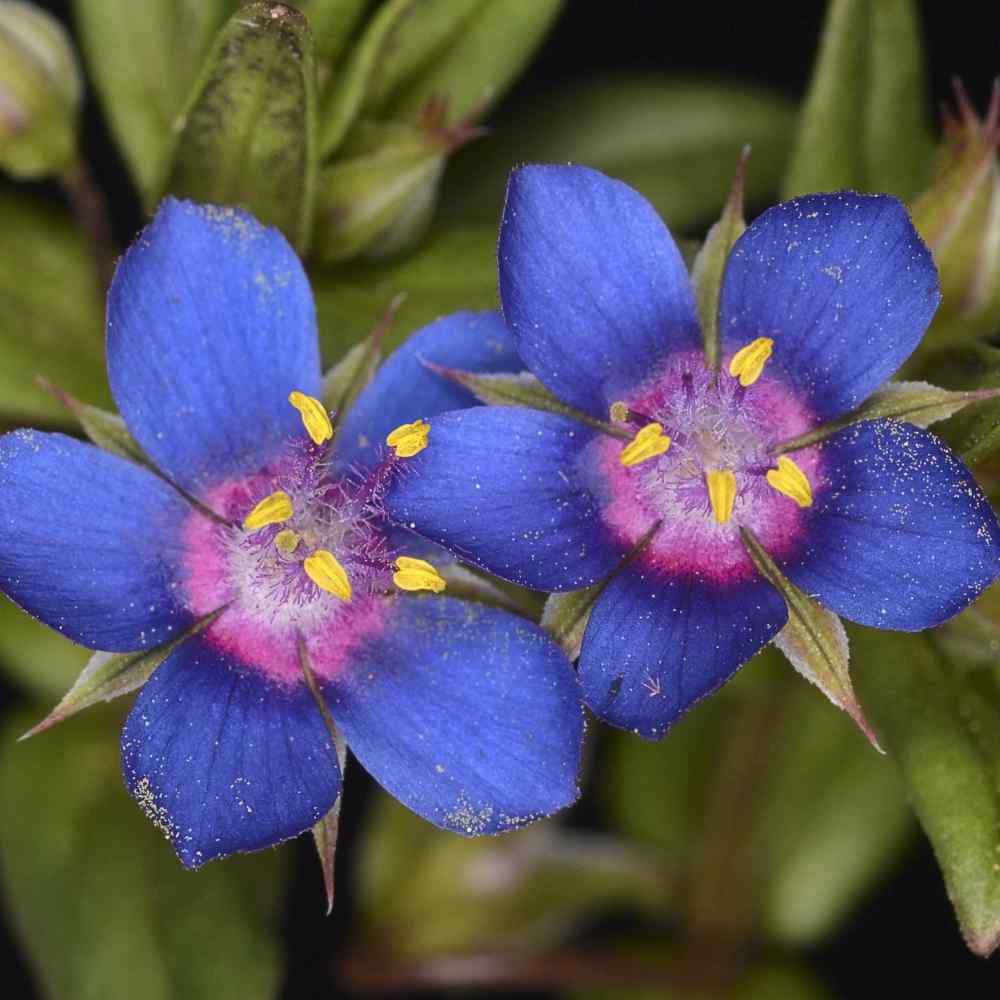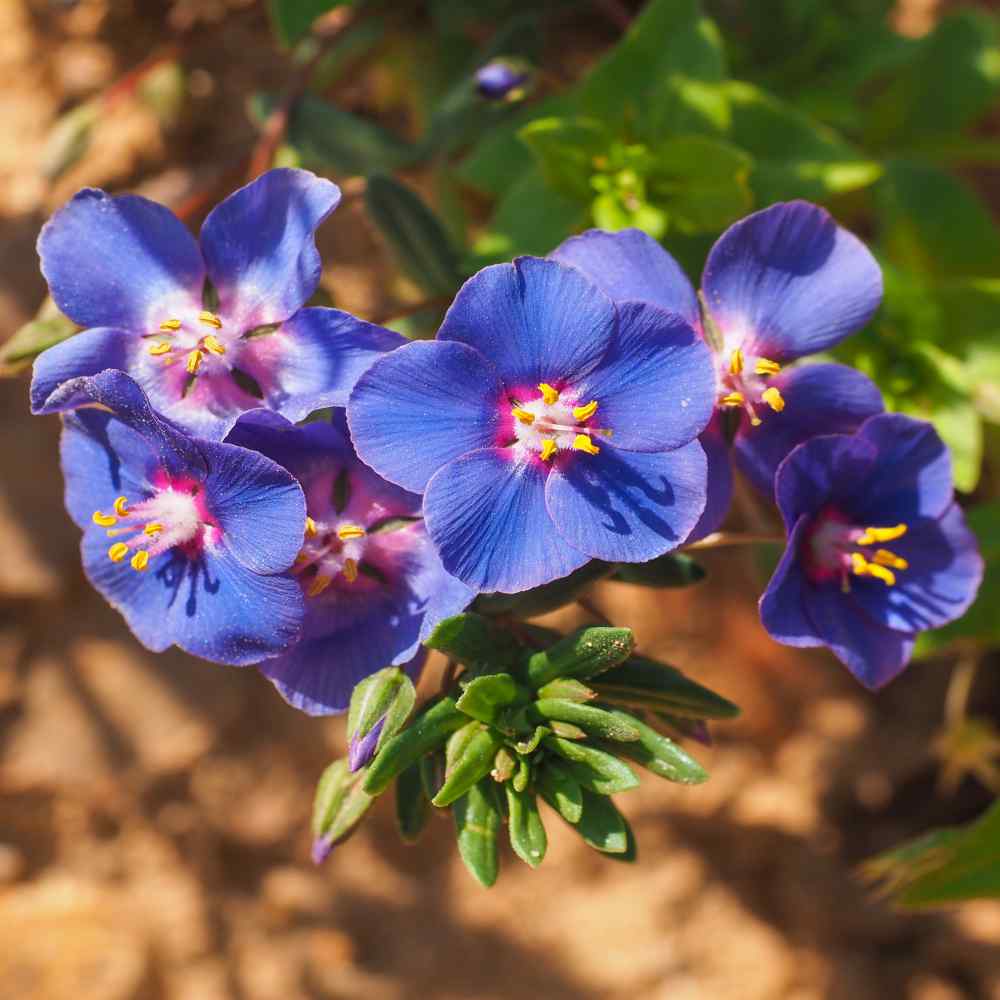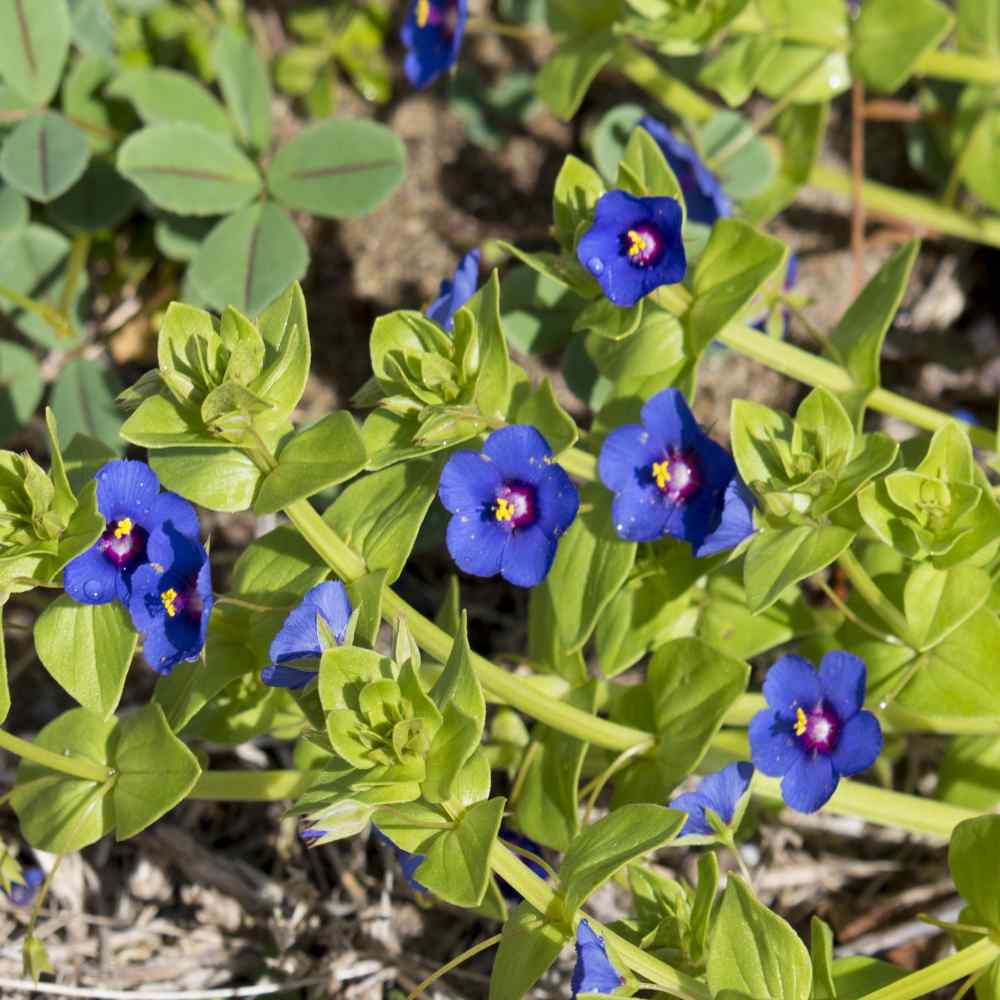Pimpernel Seeds - Blue

Groundcover Specifications
Season: Annual
USDA Zones: 5 - 10
Height: 6 inches
Width: 12 inches
Bloom Season: All summer
Bloom Color: Blue
Growth Rate: Fast
Environment: Full sun
Soil Type: Well drained moist soil, pH 5.5 to 7.5
Deer Resistant: Yes
Latin Name: Anagallis Arvenis Caerulea
Planting Directions
Temperature: 55 - 70F
Average Germ Time: 30 - 42 days
Light Required: Yes
Depth: Surface sow seed and light cover with no more than 1/8 inch topsoil
Sowing Rate: 3 - 4 seeds per plant or 5000 seeds covers 100 square feet
Moisture: Keep seeds moist until germination
Plant Spacing: 12 inches
Note: For detailed directions for indoor and outdoor planting, please Click Here
Care & Maintenance: Pimpernel




Pimpernel (Anagallis Arvensis Caerulea) - This unusual little plant is originally from Europe. Known as Blue Pimpernel, it has a spreading habit which makes it well-suited for edging a border, as a general ground cover plant, and in pots and hanging baskets. The Blue Pimpernel flower is open only when the sun shines. The habit of closing in dull weather and when rain is approaching has given the plant the name Poor Man's Weather-Glass. This caerulea variety of Anagallis is not as famous as Scarlet Pimpernel, but you cannot go wrong with adding this blue version to your flower garden. The Blue Pimpernel plant establishes easily and quickly grows and spreads to produce nice ground cover plants.
How To Grow Blue Pimpernel: Sow Pimpernel seeds in peat pots and gently press the ground cover seed into soil and barely cover. Pimpernel seeds need light to germinate. You can also directly sow Anagallis Arvensis seeds after all danger of frost has passed in groups of 3 - 4 seeds spaced 12 inches apart. Thin to the strongest plant. If consumed, Pimpernel ground cover plants can be toxic to livestock and humans.































